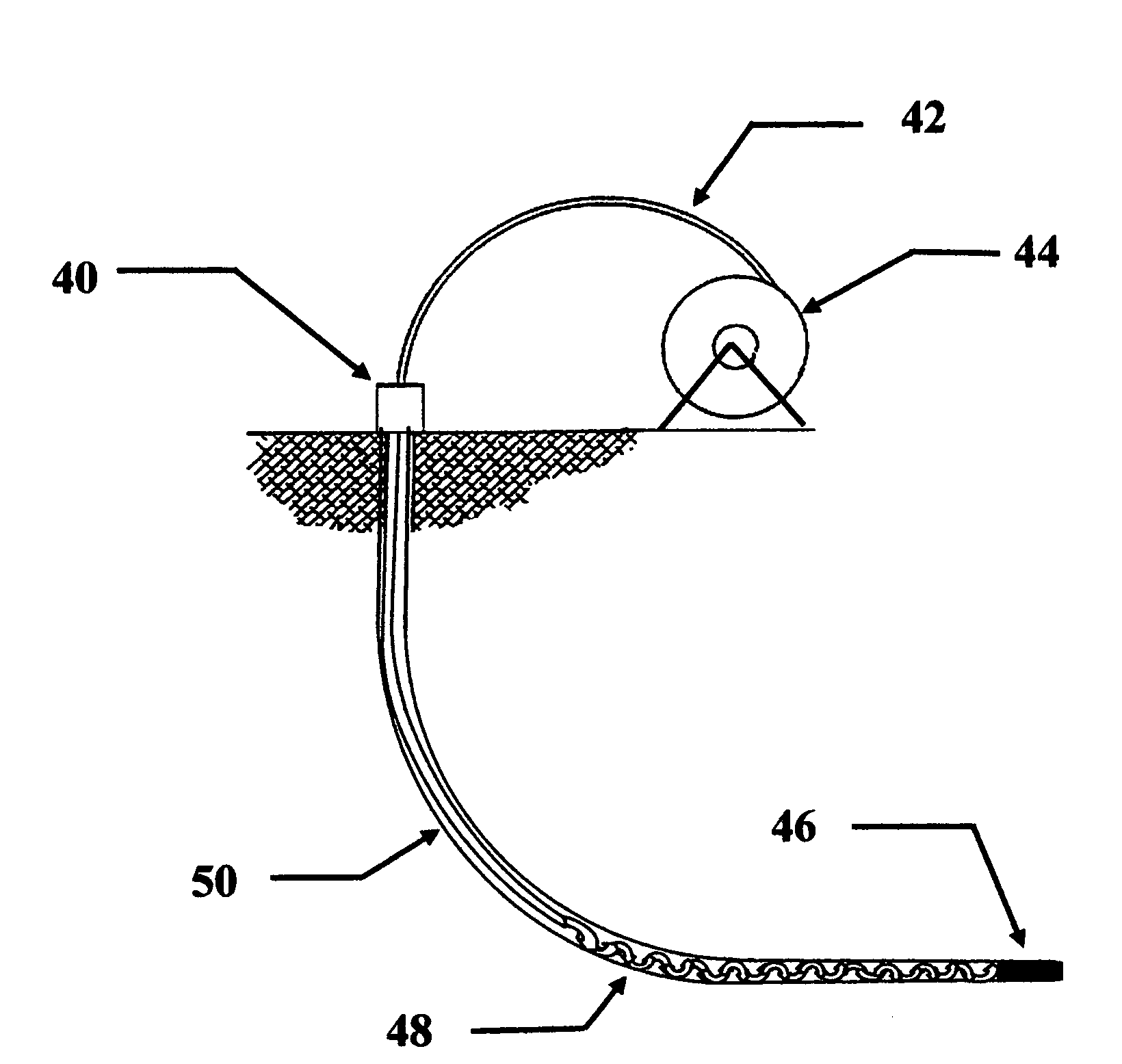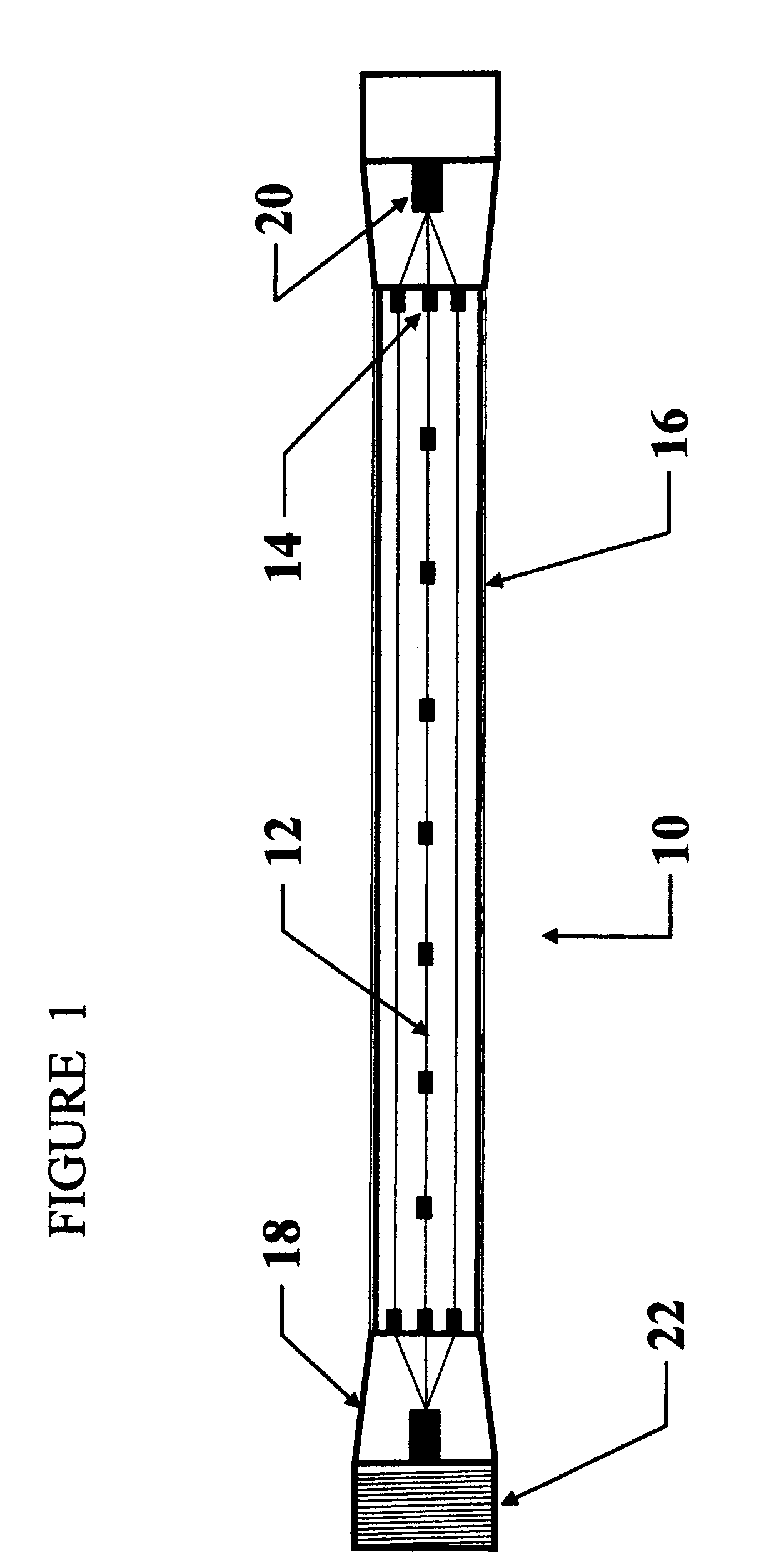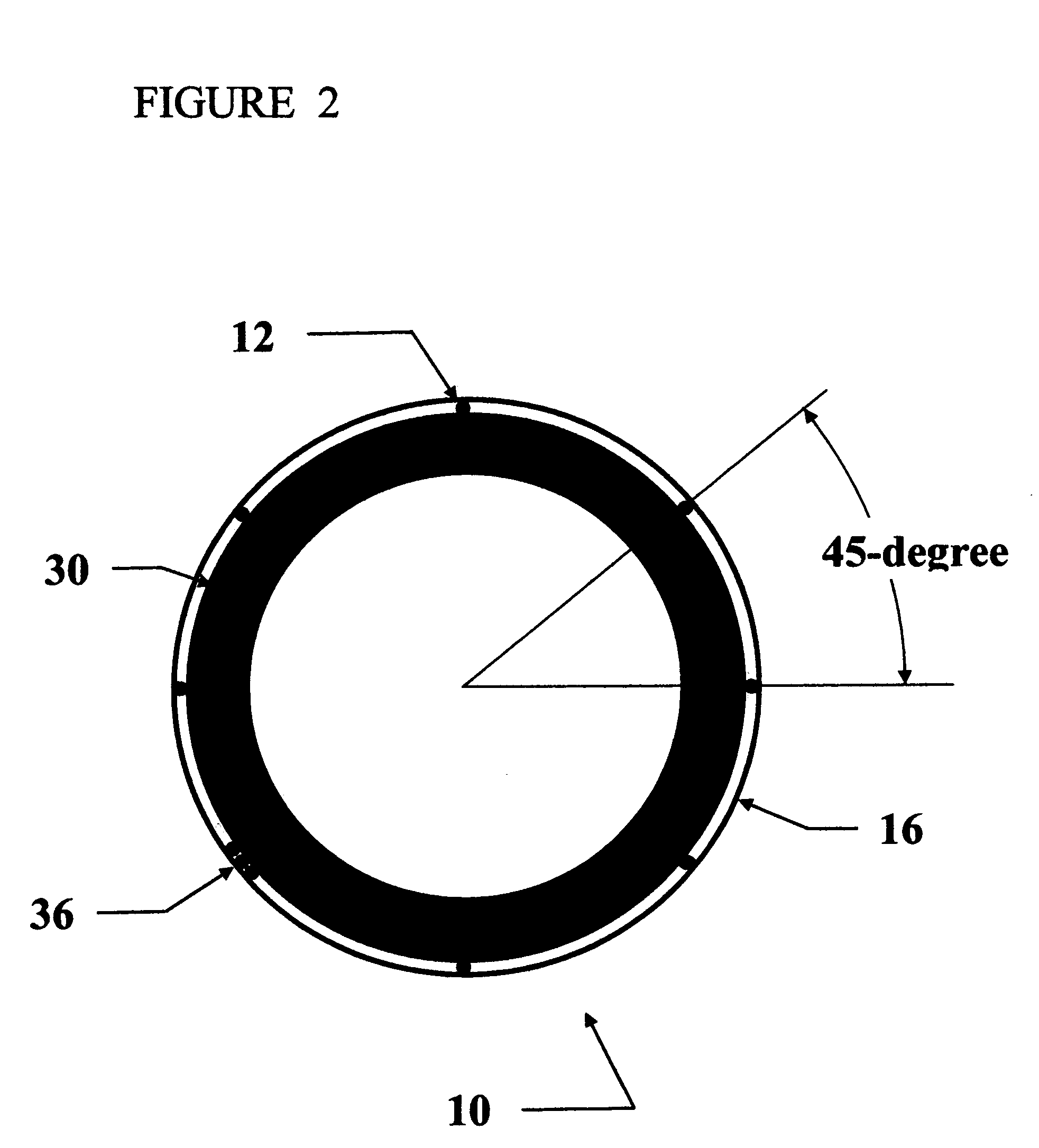Dynamic performance monitoring of long slender structures using optical fiber strain sensors
- Summary
- Abstract
- Description
- Claims
- Application Information
AI Technical Summary
Benefits of technology
Problems solved by technology
Method used
Image
Examples
Embodiment Construction
[0034]Now referring to FIG. 1, which is a side view of a Long Slender Metal or Composite Structure 10 indicating the positioning of fiber optics apparatus required to provide strain measurements. The Long Slender Metal or Composite Structure 10 is a single segment of a long assembly of similar structures joined together with Threaded End Coupling 22 located on End Termination 18 or by other means. Axial Optical Fibers 12 are positioned along the axis of the Long Slender Metal or Composite Structure 10 and the glass or plastic optical fibers have Optical Reflective Interfaces 14 to provide capabilities consistent with either time of flight instrumentation such as Optical Time Domain Reflectometry or as gratings for Bragg diffraction strain measurements. Optical Reflective Interface 14 may be placed at each end of the optical fiber which is rigidly attached to the long slender structure making possible a gage length of the entire length of the Long Slender Metal or Composite Structure...
PUM
 Login to View More
Login to View More Abstract
Description
Claims
Application Information
 Login to View More
Login to View More - R&D
- Intellectual Property
- Life Sciences
- Materials
- Tech Scout
- Unparalleled Data Quality
- Higher Quality Content
- 60% Fewer Hallucinations
Browse by: Latest US Patents, China's latest patents, Technical Efficacy Thesaurus, Application Domain, Technology Topic, Popular Technical Reports.
© 2025 PatSnap. All rights reserved.Legal|Privacy policy|Modern Slavery Act Transparency Statement|Sitemap|About US| Contact US: help@patsnap.com



